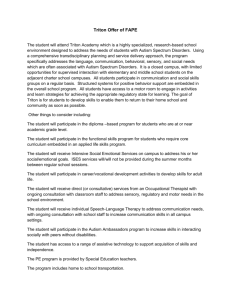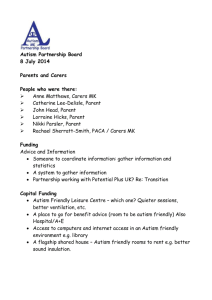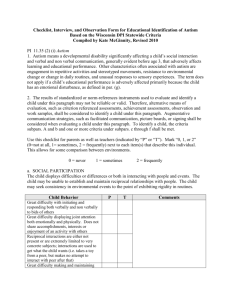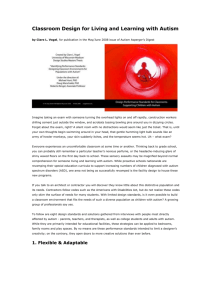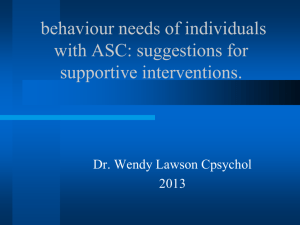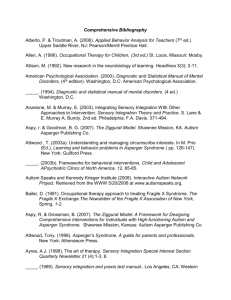Transcript
advertisement
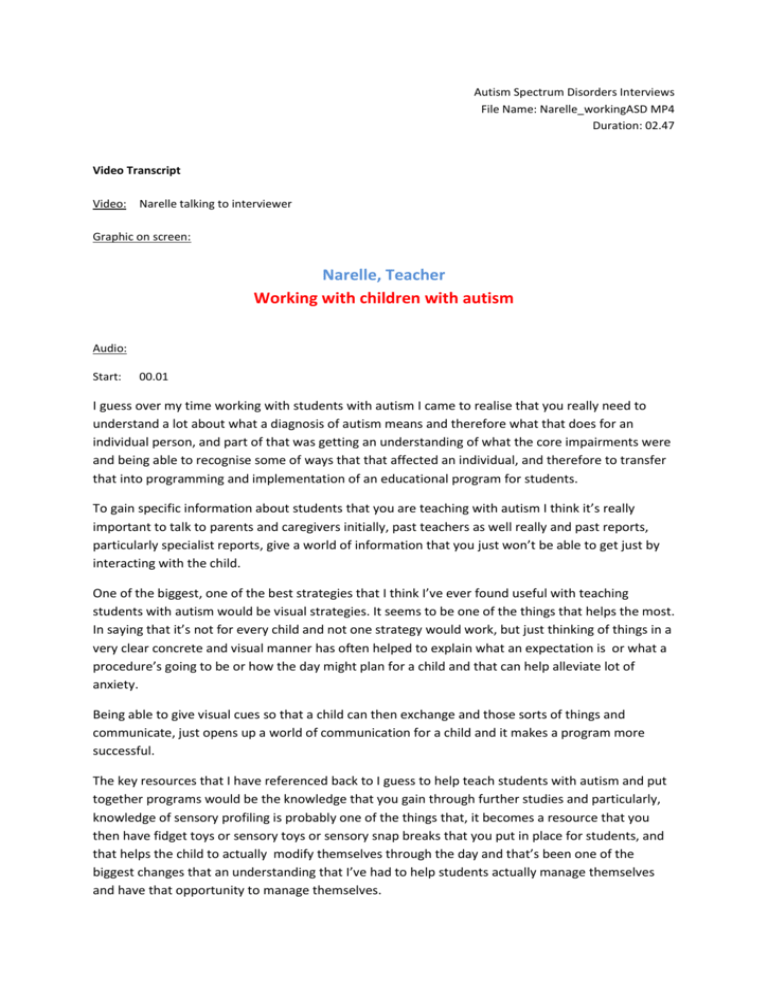
Autism Spectrum Disorders Interviews File Name: Narelle_workingASD MP4 Duration: 02.47 Video Transcript Video: Narelle talking to interviewer Graphic on screen: Narelle, Teacher Working with children with autism Audio: Start: 00.01 I guess over my time working with students with autism I came to realise that you really need to understand a lot about what a diagnosis of autism means and therefore what that does for an individual person, and part of that was getting an understanding of what the core impairments were and being able to recognise some of ways that that affected an individual, and therefore to transfer that into programming and implementation of an educational program for students. To gain specific information about students that you are teaching with autism I think it’s really important to talk to parents and caregivers initially, past teachers as well really and past reports, particularly specialist reports, give a world of information that you just won’t be able to get just by interacting with the child. One of the biggest, one of the best strategies that I think I’ve ever found useful with teaching students with autism would be visual strategies. It seems to be one of the things that helps the most. In saying that it’s not for every child and not one strategy would work, but just thinking of things in a very clear concrete and visual manner has often helped to explain what an expectation is or what a procedure’s going to be or how the day might plan for a child and that can help alleviate lot of anxiety. Being able to give visual cues so that a child can then exchange and those sorts of things and communicate, just opens up a world of communication for a child and it makes a program more successful. The key resources that I have referenced back to I guess to help teach students with autism and put together programs would be the knowledge that you gain through further studies and particularly, knowledge of sensory profiling is probably one of the things that, it becomes a resource that you then have fidget toys or sensory toys or sensory snap breaks that you put in place for students, and that helps the child to actually modify themselves through the day and that’s been one of the biggest changes that an understanding that I’ve had to help students actually manage themselves and have that opportunity to manage themselves. I’m quite aware that I’ll be teaching students with autism for many years, it’s a career path that I’ve taken and I’m quite overjoyed in that, it’s part and parcel with the job and I love the environment. It’s a very rewarding environment to work in. Finish: 02.47






